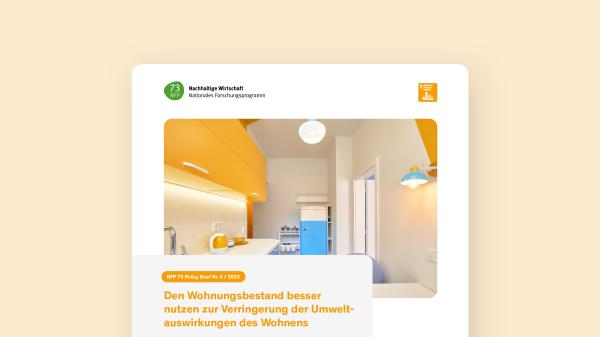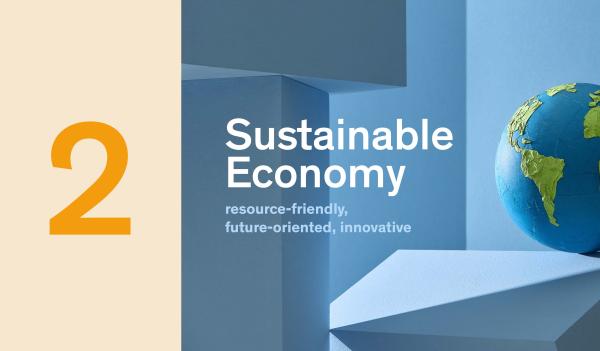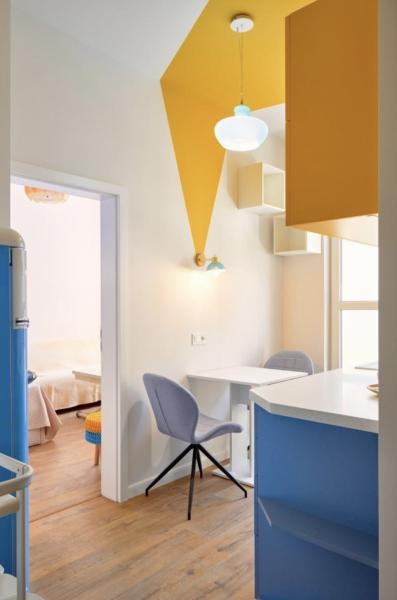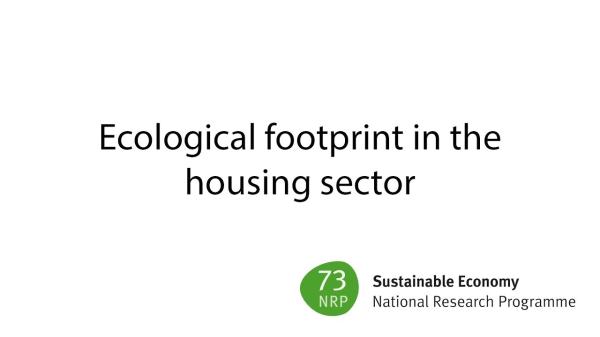Ecological footprint in the housing sector
This project examined measures for reducing the consumption of resources in housing during the construction, use and renovation phases; measures by residents (e.g. understanding the functions they attach to housing), owners (e.g. occupancy management) and authorities (e.g. supporting cooperatives).
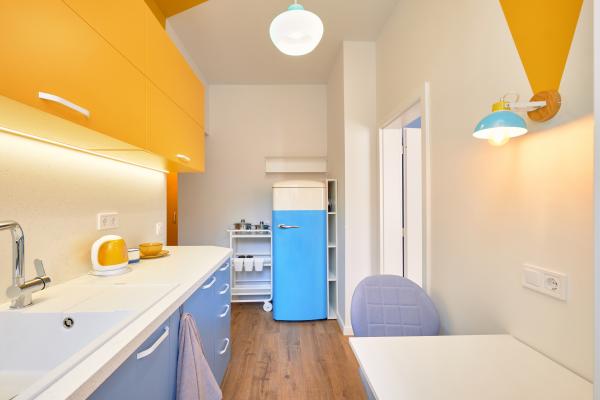
Background
The project combined methodologies from the natural and social sciences. A major feature was the inclusion of two housing cooperatives – ABZ, Zurich and SCHL, Lausanne – and the insurer and asset manager Schweizerische Mobiliar. Their housing stocks (a total of approximately 10,000 apartments) were examined in depth. Together with these partners, we developed measures to improve resource efficiency and simulated their effect on the environmental footprint of housing.
Aim
The aim of this project was to better understand by what means, and to what extent, the environmental footprint of buildings can be reduced. We discussed the project’s results with a range of building owners and tenants, together with whom we developed effective and consensus-based recommendations whose impacts on comfort, costs, returns and resource consumption were modelled and made transparent. In this way, it is possible to present viable paths for sustainable living.
Results
We conducted a detailed survey of the current status of the building and occupant inventories of our three project partners mentioned above and the historical evolution of these inventories. We quantified resource requirements and their environmental impacts using a mass and energy flow model. We determined the decision-making factors for moving house (how often?) and the choice of new accommodation (where? how large?), and also recorded resource efficiency during construction and the decisive factors involved in reconstruction or demolition (when? how often?). Based on these data, we developed agent-based models that couple tenants’ decisions with those of the owners. With these dynamic models, we simulated a range of resource-efficient development pathways.
Increasing resource efficiency through restrictive leasing
In a first scenario, owners apply a relatively strict occupancy rule when attributing dwellings to candidate tenants: at least as many occupants as rooms, and not more occupants than the number of rooms plus two. This rule, applied only at the time of the lease signing with no later controls, slows down the trend increase in floor area per capita over the next thirty years from 11% in the reference scenario to 5.7%.
Increase resource efficiency through restrictive building construction
In a second scenario, owners' capacity to build new dwellings is divided by five, forcing them to densify their existing stock instead. This slows down the trend increase in dwellings' average surface over the next thirty years, from 6.3% in the reference scenario to 3.2%.
Increasing resource efficiency through increased sustainability awareness
In a third scenario, households' environmental awareness is increased, leading a growing share of them to look for dwellings whose size is closer to their household size, including through moving out of an oversized dwelling. This by itself, without any change on the supply side, reduces the growth of the average floor area per capita from 11% to 6.4%.
Best results are obtained when these measures are combined.
Implications for research
Our research demonstrated that a systems perspective is crucial to unravelling the complex interactions between residential preferences, housing forms and environmental footprint. By identifying the housing systems’ functions and analysing the role they play in tenants’ relocation process, our findings pointed to possible ways to overcome disciplinary fragmentation and consequent gaps in the study of residential preferences, satisfaction and mobility.
By identifying the investment choices of property owners with multiple objectives and numerous constraints, as well as their housing management practices (maintenance, replacement, dwelling attribution), we developed a systematic representation of the supply side of the housing market. Through a set of tractable indicators for environmental impacts, we provided a simple mapping of the management and occupation of a stock of dwellings to its environmental footprint. The resulting systems knowledge was used as a basis for the design of agent-based models allowing for the context-specific simulations of residential dynamics and the implications for resource use.
Implications for practice
Between 1990 and 2021, the population of Switzerland grew by 31 percent, while living space increased by 54 percent. This is one of the main drivers of resource consumption. The measures recommended by the project are aimed at reducing the material footprint of residential buildings without increasing their energy consumption. At the same time, acceptance and economic efficiency should also be taken into account. This was possible thanks to close cooperation with major property owners who co-develop such measures and want to implement them. The project thus contributes to reaching Sustainable Development Goal no. 11 (sustainable cities and communities).
Publications
Contact

Project leaders
Prof. Dr. Philippe Thalmann
Institut d’architecture et de la ville
EPF Lausanne
Prof. Dr. Claudia R. Binder
Institut d'ingénierie de l'environnement
EPF Lausanne
Prof. Dr. Stefanie Hellweg
Institut für Umweltingenieurwissenschaften
ETH Zürich
Project partners
ABZ
SCHL
Swiss Mobiliar
